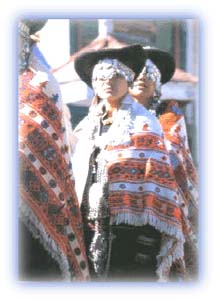Kinnaur himalayas
General Info
· The Satluj Saga
· The Story of the Baspa
· Valleys
· Hangrang valley
· Ropa valley
· Bhaba valley
· Other places of interest
· Nilchar
· Kalpa and Peo
· Pooh
· Moorang
Climate and Vegetation
People
· Kinners
· Traditions and Culture
· Livelihood
· Villages in Kinnaur
Religion
· Hinduism
· Buddhism
· Superstitions and Beliefs
Art and architecture
History

![]()
| Fairs and festivals The colorful fairs and festivals of the Himachali people provide healthy recreation and market places for its people. Many fairs are held round the year and on these occasions people are at their joyous best. Most of the fairs are held in commemoration of some event or the other, the origin of which is lost in the legends. |
· Baisakhi · Dakhraini · Flaich · Fulaunchi · Sazo · Shivratri · Deeval · Suskar |
 |
| Kinners during festivities. Credit: Discover India |
They remain the most important source of entertainment for the people of Kinnaur, particularly those living in the core areas of the cold desert like the Pooh and Moorang tracts.
Fairs usually form a part of important festivals which are celebrated in different parts of Kinnaur all round the year. The fairs are not always held for purely commercial or trade activities. The people gather on such occasions and enjoy by drinking, singing and dancing. Community meals are usually a common feature of festivals and fairs. In some cases, they wear strange and fancy dresses and put on masks with horns, though no magical or religious importance is attached to these masks.
Folk dances are an essential part of the life of the tribals and dances are a means of enjoyment, a reaffirmation of social unity. Dances are an important feature on all occasions of some social import.
Several types of dances may be performed during festivals and fairs. These can be placed into two broad categories or groups -- Kayang and Bonyungabu chashimis. These categories are based on the movement of steps, style of holding hands, different types of songs sung and music played when the dance is being performed.
© 1997 ThinkQuest team 10131
All rights reserved